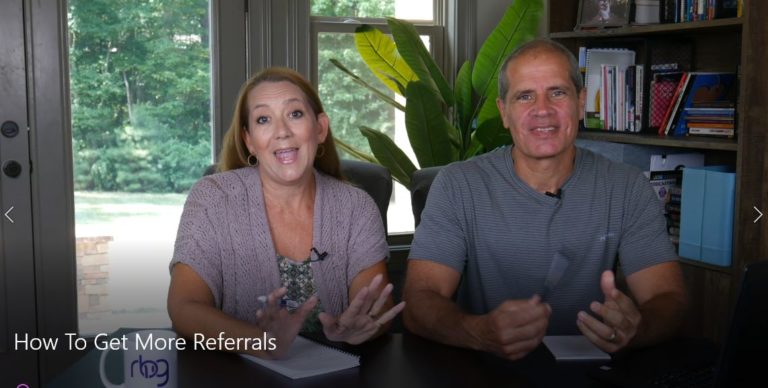Book Review: “Sell Yourself First” by Thomas Freeze

OK, full disclosure, I always read the Table of Contents before spending valuable hours reading a book. I have to be honest, not all the chapter titles intrigued me. So, I didn’t read this book completely in its entirety, word for word. I did however find a few intriguing chapters, that I quickly turned to.
With all the skepticism in the world today (and everyone and their brother being a salesman selling something) we must come up with a different way to cut through all the baloney, and that’s exactly what the author shows his readers.
I love that he calls it like it is, right from the start: The Elephant in the Room.
In today’s world and business environment (or even in our personal social circuits) everyone is skeptical and wants to know ‘are you or are you not going to rope me into something’. Our defense mechanisms immediately go up every time we meet new people. That is sad!
Millions of us have heard, and we still hear, that we must have an elevator pitch.
“Starting with an ‘elevator pitch’ to convey value is officially dead as a viable differentiation strategy. After a salesperson finishes spewing all the wonderful benefits of his or her product offering, the customer’s two biggest issues have not been addressed. What decision makers really want to know is ‘who’ to trust and ‘how’ to make a good decision. Even if you have a great story to tell about your products and services, customers are skeptical of sales pitches, now more than ever. Thus, for the sake of maximizing your credibility and differentiating your company’s value you must be willing to give customers what they really want – the rest of the story. Customer skepticism is the “elephant in the room,” and you’ll help yourself by dealing with it upfront.”
– Thomas Freeze (page 13)
He goes on to say, “let’s not be surprised when the traditional elevator pitch or taking an infomercial sounding approach to positioning the value of your product or service offering doesn’t garner a receptive audience…”
I have found this to be incredibly true. Most customers don’t despise sales people (although we’ve all had run-ins with ‘those’ types), we actually depend on them for lots of things. We depend on them for ideas, information, education, vision, solutions to problems.
What you need to try to do is match the customers’ needs with your solutions. By doing so you become a valuable resource and a trusted adviser. Remember, in many cases you are not the only person that has products and services that will add value and solve their issues. Therefore, YOU are more important than your product, your company, or your service. YOU must sell you and how you can make a difference for them.
How can we do this? By making them have a strong comfort level with you.
They want to know that you care about their success, that you can understand their problems, and that you have the depth and the perception to be able to help them as well as the solutions and resources to follow through. This is what makes you stand out against all your competitors who have similar offerings.
It is now more true than ever that deals are won by the intangible things that you bring to the table – things like credibility, experience, integrity, vision, creativity, responsiveness, thoughtfulness, leadership, humility, professionalism, preparedness, commitment, assertiveness, helpfulness, confidence, energy, passion, and most of all respect.
“Sure, you can tell customers how great your solutions are, but your competitors are going to make similar claims about their products and company, and potential buyers will discount most of these claims anyway, just like you do when you flip past an infomercial on TV.”
– Thomas Freeze (page 22)
Knowing that most buyers are natural skeptics, and we ‘sellers’ are ultimately going to be judged by our actions, it’s safe to assume that desirable human qualities like humility must be demonstrated and trust earned, as opposed to claimed, to register value in the eyes of prospective clients. Even too much enthusiasm can come across as fake, and that can make them even more cautious and skeptical.
Remember that negative perception of salespeople is inherited and ingrained. It’s a perception that many people have formed from past interactions with others who approached them. Just like we have had those encounters ourselves and have felt uncomfortable. This natural skepticism is not a personal attack on you! It is real. Skepticism is a form of a mechanism. It began from past experiences where someone who was only focused on delivering their sales pitch, rather than conveying real value, burned us and caused us to construct a wall.
This is what will differentiate you, your products, your company, and your service – Point out the real value and the real solutions to their problems versus a bunch of marketing smoke and mirrors. We can begin to do this by first having a question-based sales philosophy. Make sure that you ask them lots of questions, then really listen to the answers. You can then easily pinpoint what they’re trying to solve rather than being a solution-data-dumper and telling them solutions to problems they may or may not even have!
Focus your attention on them. Hear their issues, their problems, then find out the alternatives they have tried that either partially worked or currently work. You may be able to provide better value. The real trick to being successful is causing your customers to see the value of how your solutions will address their needs and within this process make them comfortable enough to justify a decision to move forward.
Once you have shown them the value, make sure you ask for the business. In asking, always form it in a positive way. “Now that you have a pretty complete perspective regarding our products or services in our company, would it make sense for us to think about sitting down and wrapping up the details?”, or “Are we still good to move forward?”, or “When would you like to see an increase in your productivity? (…your finances? … your wellness? …whatever)”
The question isn’t DO you want results by working with us but rather WHEN would you like to start seeing results.
He reminds us in Chapter 4 that trust is a “long term human emotion that grows out of the confidence one has developed from successive encounters when the other person’s expectations were either met or exceeded.” So always exceed expectations!
In order to exceed expectations, you need a clear understanding of what they expect. Well – DUH! You can only achieve this by asking a bunch of questions. He stands by his question-based philosophy and reminds us that in today’s competitive environment you need to ask questions that are not only highly effective, but that cause people to want to share valuable information with you. By doing so you will lead them to actually ASK YOU about your solutions.
How great would that be to have a potential customer or client invite you to share what you have to offer! Try something like, “Can I ask you a couple specific questions about your organization so that I can give you all of the relevant and accurate information?” If you ask this they most likely will say ‘sure go right ahead’. That is an invitation to continue to let them know about what you do and will lower their defense mechanisms. Win-Win. Starting sentences with, “Would it make sense to…” or “how familiar are you with…” are also great ways to invite a discussion.
I love his analogy at the beginning of chapter 5.
“Have you ever noticed that your local hardware store sells drills and drill bits? But if you think about it, no one actually wants the drill itself. What they really want are holes. Isn’t that odd? Hardware stores don’t sell what the customer really wants – holes. Instead, they sell the drills and the drill bits as a means to accomplish the customer’s true objective.”
– Thomas Freeze
If you can establish and identify the reasons why the customer needs your product or service, you will be in a much better position because your view of the value of your product or service is less important than how it is perceived by prospective customers. Get to their problems and provide your solutions for those problems, not a data-dump of all the great studies and amazing things that your company has to offer.
In my own business I have found that this formula works:
Identify Problem (by asking questions/observation)
+ discuss alternatives they have tried (didn’t work or it wouldn’t still be a problem)
+ provide alternative solutions you have available
= New Client/Customer
Another great way to get the conversation rolling is to pique their curiosity.
You do this by asking questions, not just open-ended questions but questions that can pique curiosity. Questions that lead them to the root problems and concerns and show them your understanding of their issues. We call these ‘Stump Questions”.
Once those have been revealed, and they are impressed with your understanding of what they need, then provide your solutions. This will instantly help you to build that relationship and trust and close the deal.
There is a lot of information in this book. It is chock-full of examples and ways to get you moving forward, get your business moving towards success, and closing more deals. I recommend this book, or at least a few of the chapters, as well as his book Secrets to Question-Based Selling.
*NOTE: Since I am taking notes straight from the book, sometimes I quote it directly and sometimes I have paraphrased, and sometimes I add in my own thoughts and practices. If I have quoted directly and did not cite – please know it was an oversight. I give full credit to the author of the book for the thoughts, ideas, and lessons contained in this summary. Yes, it makes me think, and yes, some of my own personal thoughts are on these pages. But the author deserves the credit. His words prompted my thoughts. This is a book review and is intended to give you a broad overview and thoughts on the book. My hope is that the author’s wisdom will flow through me into your hands. I highly recommend that if you see “gold-nuggets” in these brief notes that you pick up a copy and read it from cover to cover.








Responses